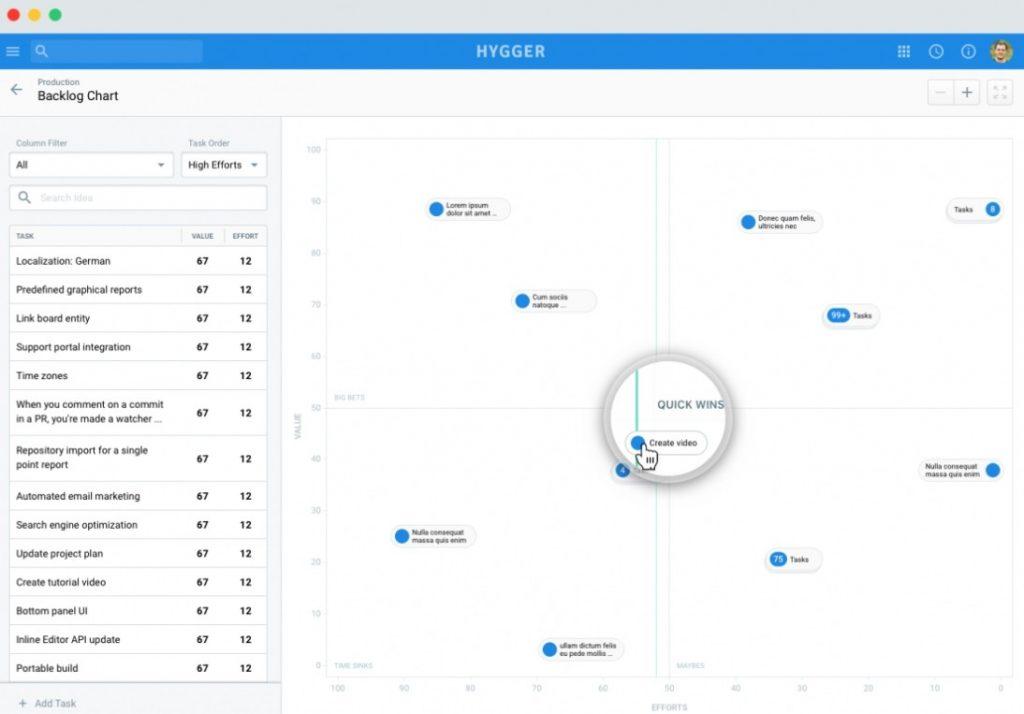How to Maintain Product Backlog When It Rapidly grows?

In the time of high competitiveness, it’s important to focus on key priorities. Competitors constantly release new features. There are so many of them, you don’t even have time to learn all of them. Your users suggest improvements, give you advices and your colleagues are coming up with ideas all the time. There are a lot of updates happening constantly.
It’s more likely you want to implement the features that will increase your product income, retention or virality. It’s great if you integrated some framework, for example, Pirate Metrics or AARRR. It helps you to focus on the most important stages of sales funnel, such as AARRR
- Acquisition
- Activation
- Retention
- Referral
- Revenue
Challenges
So you have a problem, you have many ideas bunched up from different sources: from Intercom, Zendesk, Satismeter, from private talks with your clients, from your employees. It’s becoming more difficult to pick things for next sprint. And the cost of a mistake is really high. It’s a risk to make a feature that won’t be popular among the audience and won’t bring expected benefits.
For example, that feature won’t increase registration conversion or ARPD, and the money you spent for that feature development will be lost irretrievably.
Backlog increases constantly and it becomes more difficult to control as managers spend a lot of time grooming it. They review ideas, prioritize them and throw away outdated things. Each time they do this they need to look through all the ideas.
Solution
We, in Hygger.io offer you a systematic solution for the issue of making a choice. Our solution consists of three main blocks:
- Backlog structuring with a help of the Kanban board, labels and Swimlanes
- Ideas assessment with 2 criteria, i.e. Value and Effort.
- Choosing the most important ideas with a Backlog Priority Chart visual tool.
Backlog structuring
As a rule, a product backlog board is a plain list of ideas. In Hygger backlog is a two-dimensional board. Moreover, we have Labels and Swimlanes. That’s more than enough for structuring your backlog of all sizes.
For example, columns on Backlog board may be the working stages for ideas, such as:
- Collect ideas – you gather all your ideas. One sentence or one word may be enough.
- Review ideas – the next thing you do is reviewing ideas, making them clear and add some words about them. There’s no need to describe each idea in details since your team may not choose it and won’t develop it.
- Score ideas – you evaluate ideas at this stage – we will talk about it a bit later.
- Approval – at this point it’s a scrum master or project manager that checks the idea. Is the description clear enough for further development?
- Developing – idea is being worked on.
- Done – idea is released and a feature is production-ready.
That’s only an example of a process. There is probably a design department in your company and you need to prototype an idea first, write a technical specification and only after that it may go to the development. You may tailor a board structure to your development process.
Instead of a process, you may make releases in Columns. It will help you to arrange ideas according to future releases. By the way, you can do it with Hygger which may count capacity for Columns.
You may arrange ideas with the help of Swimlanes
Hygger Swimlanes as horizontal columns on Kanban board are used to separate different kinds of issues that team members use. With their help, teams can see which issues they should work on next. So you may arrange your ideas like this:
- According to system components (backend, frontend, API, mobile apps, etc.)
- According to high level areas of product life cycle (usability, new features, marketing, technical debts, etc.)
- According to some framework like Pirate metrics (acquisition, activation, retention, referral, revenue).
You may use Labels for different purposes. For example, to tag ideas from particular users or from particular employees. Or to tag especially important ideas. Or to tag Candies – small features which ‘sweeten’ a product for users. These Candies do not require a lot of effort from us and they don’t affect our velocity. But when users see these Candies they feel our care and they trust us more.
Ideas evaluation with Value and Effort
Hygger offers you to rate all ideas with a help of 2 criterias: Value and Effort.
Talking in abstract language Value is an impact, that an idea or a feature can bring to your product. For correct estimation you need to understand what you would like to improve with the help of this feature. Let’s say you’ve integrated Pirate Metrics (AARRR), then your goals may look like this:
- You want to improve conversion rate for your signup flow (Acquisition)
- You want to increase number of users who must catch that ‘aha!’ moment and become loyal users of your product (Activation)
- You want users to come more often to you and use some feature (Retention)
- You want to increase the number of invitations (Referral)
- You want to increase an average bill (Revenue)
We use Fibonacci numbers for estimation and planning poker in Hygger. We have a set of cards with the following values: ?, 0, ½, 1, 2, 3, 5, 8, 13, 20, 40.
Here is the evaluation process of an idea in our company:
- A team leader takes a new idea from a queue.
- A team discusses this idea out loud so everyone could understand this idea in the same way.
- Each member puts the values in such a way that the other members do not see them (to not affect their opinion).
- The team leader opens all the cards and all discuss the values.
- People who rated with the highest and lowest values explain their decision.
- Then the team has a discussion until they come to a consensus. We usually use a timer to increase the quality of discussions.
As a rule, a person who has technical competence rates Efforts, it can be a project manager or a product manager who has a software development experience. Evaluation that is made at this point is usually rough, developers don’t take part in this process. It’s too early to get developers involved at this stage because not all of the ideas get to the development stage. And there’s a risk that you will waste your time on nothing.
Once you have evaluated all the ideas you may start choosing an idea. It’s not mandatory to do it right after evaluation, sometimes it’s better to take a pause and let the ideas stay there for a while. As you may get new data from the outside, and that may affect your estimation for Value and Efforts.
Picking ideas with the help of a Backlog Priority Chart
You may see estimated ideas on a backlog priority chart.
There are 2 scales on a chart – Value and Efforts. And 4 quadrants:
- Quick Wins – ideas with a really high value and low efforts. These are the low-hanging fruits that should be worked on immediately. The earlier you finish the earlier you will get results.
- Big Bets – ideas with high value and efforts. You may do them in the second place. They will take more working time than Quick Wins but they will bring the same profit. Try to break down these features into smaller, bite-sized tasks and remap them against other features.
- Maybes – these features offer lower value for customers but are easy to implement. They are great fillers which can be slotted in when there are small amounts of downtime, or between larger features. It’s also a great way to ensure continued momentum.
- Time sinks – ideas with low value but significant effort to deliver. Whilst still offering some benefits to the customer these shouldn’t be prioritized at this point in time.
The chart is useful for evaluating ideas relative to each other. During evaluating sessions ideas are being rated independently from each other. But once we begin to compare ideas that have similar estimation there’s a possibility that some of them will be more useful or less labour intensive. Based on that we may correct idea’s estimation, its Value and Efforts indexes.
So, you’ve estimated all ideas and sort the most useful ones with a help of a chart, now you can send them to development to Kanban or Sprint board.
Feel free to add your comments and do not hesitate to try new Hygger features from the latest update.






